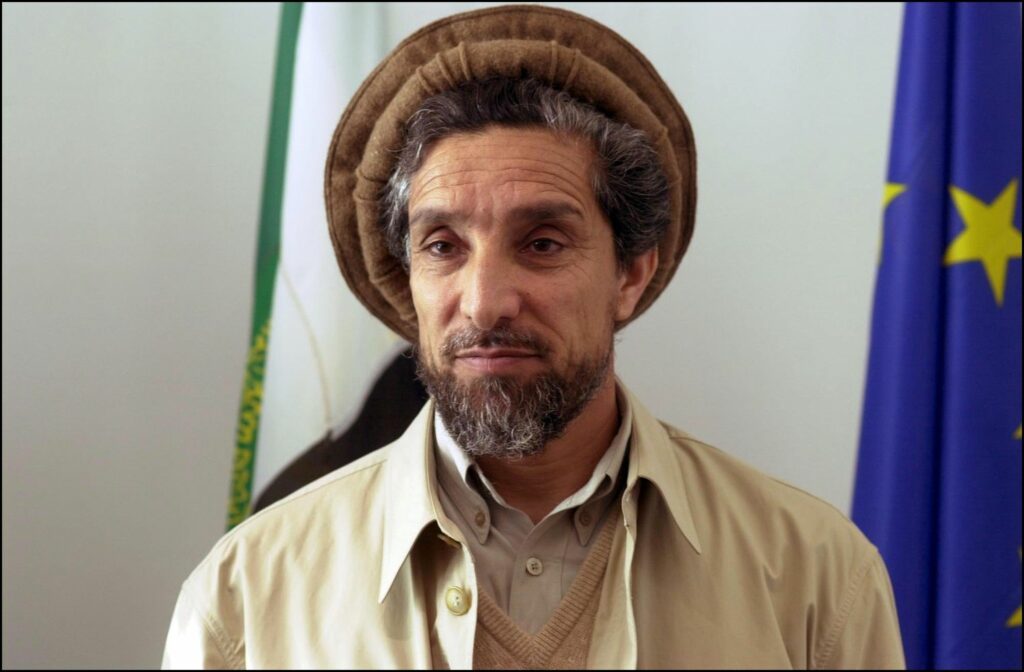The Tragic End of Ahmad Shah Massoud: Architect of Resistance, Victim of Terrorism

Introduction:
The assassination of Ahmad Shah Massoud, the revered military commander of the Afghan Northern Alliance, on September 9, 2001, marked a pivotal moment in the complex tapestry of Afghan history. Massoud, known as the “Lion of Panjshir,” played a crucial role in the resistance against Soviet occupation and later against the Taliban regime. This extensive article explores the life, legacy, and the circumstances surrounding the tragic assassination of Ahmad Shah Massoud.
I. Ahmad Shah Massoud: The Lion of Panjshir
- Early Life and Military Background: Born on February 2, 1953, in Panjshir, Afghanistan, Ahmad Shah Massoud emerged as a key figure in the resistance against the Soviet Union’s invasion of Afghanistan in the 1980s. His early life and military education set the stage for his role as a formidable leader and strategist.
- Resistance Against Soviet Occupation: Massoud gained international acclaim for leading the resistance in the Panjshir Valley against the Soviet forces. His guerrilla tactics and strategic brilliance earned him a reputation as a military genius and a symbol of Afghan resistance.
II. Post-Soviet Era: The Rise and Fall
- Taliban Takeover: Following the Soviet withdrawal in 1989, Afghanistan plunged into a period of civil unrest. The rise of the Taliban in the mid-1990s posed a new threat, prompting Massoud to continue his resistance against the fundamentalist regime.
- Northern Alliance Formation: Massoud played a key role in forming the Northern Alliance, a coalition of anti-Taliban forces. His leadership became pivotal in the fight against the oppressive Taliban rule, drawing support from various ethnic groups opposed to the extremist regime.
III. The Assassination Plot:
- The September 9, 2001 Attack: On the eve of the 9/11 attacks in the United States, two suicide bombers posing as journalists carried out an assassination attempt on Massoud. The attackers, believed to be linked to Al-Qaeda, detonated explosives during an interview, critically injuring Massoud.
- Connection to 9/11: The timing of the assassination, just days before the September 11, 2001 attacks, raised questions about a possible link between Massoud’s death and the impending global events. Some speculate that Al-Qaeda sought to eliminate a key obstacle before executing its larger plan.
IV. Legacy of Ahmad Shah Massoud:
- Symbol of Resistance: Ahmad Shah Massoud’s legacy endures as a symbol of Afghan resistance and the fight for freedom. His unwavering commitment to defending his homeland resonates with those who admire his dedication to preserving Afghanistan’s cultural and historical identity.
- Architect of Democracy: Massoud’s vision for Afghanistan extended beyond military resistance. He advocated for a democratic and inclusive government that respected the diverse ethnic and religious makeup of the nation, a vision that would become crucial in post-Taliban Afghanistan.
V. International Reactions:
- Global Condemnation: The international community condemned the assassination of Ahmad Shah Massoud, recognizing the loss of a key figure in the fight against extremism. World leaders mourned the death of a man who had become a symbol of hope for a democratic Afghanistan.
- Impact on Anti-Taliban Forces: Massoud’s death momentarily weakened the Northern Alliance, as his leadership was a unifying force within the coalition. However, it also galvanized the resolve of those opposed to the Taliban, inspiring continued resistance.
VI. Unraveling the Mystery:
- Investigations and Findings: Investigations into Massoud’s assassination revealed a complex web of actors and motives. While the attackers were linked to Al-Qaeda, questions lingered about potential involvement from other regional or international actors seeking to destabilize Afghanistan.
- Conspiracy Theories: The circumstances surrounding Massoud’s assassination have given rise to various conspiracy theories. Some theories suggest the involvement of foreign intelligence agencies, while others focus on internal power struggles within Afghanistan.
VII. Afghanistan Post-Massoud:
- Post-Taliban Era: The fall of the Taliban regime in late 2001 opened a new chapter for Afghanistan. The absence of Ahmad Shah Massoud left a void in the leadership of the Northern Alliance, shaping the dynamics of the country’s political landscape.
- Continued Struggles: Afghanistan faced ongoing challenges in the post-Massoud era, including efforts to establish stability, rebuild infrastructure, and foster a democratic government. The absence of Massoud’s guiding influence added complexity to the nation’s journey toward recovery.
VIII. Conclusion: A Legacy Unfolding
The assassination of Ahmad Shah Massoud remains a tragic chapter in the tumultuous history of Afghanistan. His legacy, as the Lion of Panjshir and a symbol of resistance, endures as the nation grapples with ongoing challenges. The circumstances surrounding his death continue to be a subject of investigation, speculation, and debate, underscoring the intricate complexities of Afghan politics. As Afghanistan navigates its path forward, Ahmad Shah Massoud’s vision for a democratic, inclusive nation stands as a beacon for those who continue to strive for a peaceful and prosperous Afghanistan.




